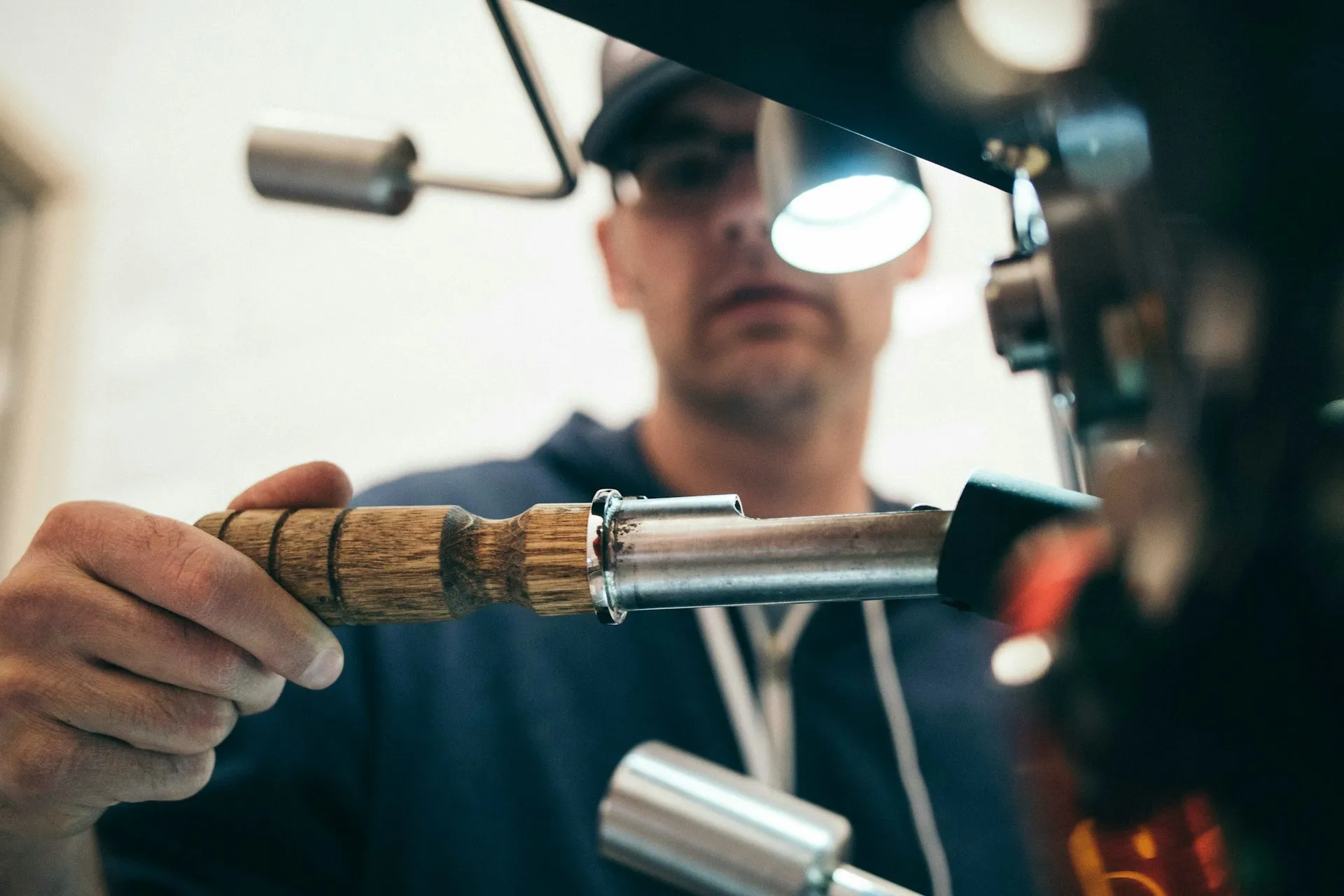HVAC AI Agents: How Smart Buildings Cut Energy Costs by 35% in 2025


The $280 Billion Smart Building Opportunity: Why HVAC AI Agents Are Leading the Revolution
The global smart buildings market reached $280 billion in 2024, with HVAC systems representing 40% of total building energy consumption. Yet despite massive investments in building automation, 67% of commercial buildings still operate with reactive maintenance strategies that result in 25-40% energy waste and unexpected equipment failures.
Enter HVAC AI agents – specialized artificial intelligence systems that transform traditional heating, ventilation, and air conditioning operations into intelligent, self-optimizing networks that reduce energy costs by 35% while improving occupant comfort and equipment longevity.
What Are HVAC AI Agents and Why Do They Matter?
HVAC AI agents are sophisticated software systems that use machine learning, IoT sensors, and predictive analytics to automatically optimize building climate control systems. Unlike traditional programmable thermostats that follow fixed schedules, these intelligent agents:
- Learn from occupancy patterns and weather data to predict optimal temperatures
- Detect equipment faults before they cause system failures or energy waste
- Optimize energy consumption based on real-time demand and utility pricing
- Integrate renewable energy sources like solar panels and battery storage
- Provide actionable insights through conversational analytics dashboards
The Business Impact: Real Numbers from Industry Leaders
Leading companies implementing HVAC AI agents report transformative results:
- Johnson Controls: 35% reduction in HVAC energy consumption across 500+ commercial buildings
- Siemens: 40% decrease in equipment maintenance costs through predictive analytics
- Honeywell: 60% faster fault detection and resolution times
- Microsoft: $10M+ annual savings from smart building HVAC optimization across their campus
10 Game-Changing HVAC AI Agent Use Cases for 2025
1. Smart Sensors & IoT Integration Agent
The Challenge: Traditional HVAC systems operate on static schedules without real-time environmental feedback, leading to energy waste and poor occupant comfort.
The AI Solution: Our Smart Sensors & IoT Integration agent connects hundreds of wireless sensors throughout buildings to monitor temperature, humidity, occupancy, and air quality in real-time. The system automatically adjusts HVAC operations based on actual conditions rather than predetermined schedules.
ROI: 25-35% energy savings and 50% improvement in occupant comfort scores.
2. Fault Detection & Diagnostics Agent
The Challenge: Equipment failures catch facility managers off-guard, resulting in expensive emergency repairs, system downtime, and uncomfortable building conditions.
The AI Solution: Using machine learning algorithms trained on equipment performance data, this agent identifies anomalies that indicate impending failures. It monitors motor vibrations, energy consumption patterns, and temperature differentials to predict maintenance needs 2-4 weeks in advance.
ROI: 40% reduction in maintenance costs and 90% decrease in unexpected equipment failures.
3. Demand Response Optimization Agent
The Challenge: Buildings miss opportunities to reduce energy costs during peak demand periods when utilities charge premium rates.
The AI Solution: This agent automatically participates in utility demand response programs by pre-cooling buildings before peak hours and reducing HVAC loads during expensive rate periods. It balances energy savings with occupant comfort through intelligent load management.
ROI: 15-25% reduction in electricity costs during peak demand periods.
4. Occupancy-Based Control Agent
The Challenge: HVAC systems waste energy heating and cooling unoccupied spaces, particularly in buildings with variable occupancy patterns.
The AI Solution: Using occupancy sensors, WiFi analytics, and calendar integrations, this agent predicts room utilization and adjusts climate control accordingly. Empty conference rooms, vacant floors, and unused areas receive minimal conditioning while occupied spaces maintain optimal comfort.
ROI: 30-40% energy savings in buildings with variable occupancy patterns.
5. Carbon Footprint Tracking Agent
The Challenge: Organizations struggle to measure and reduce their building’s environmental impact while maintaining operational efficiency.
The AI Solution: This agent continuously monitors HVAC energy consumption and calculates real-time carbon emissions. It identifies opportunities to reduce environmental impact through operational optimization and renewable energy integration, providing detailed sustainability reporting.
ROI: 25-50% reduction in HVAC-related carbon emissions and comprehensive ESG reporting.
How Panorad AI Transforms HVAC Data Into Actionable Insights
While HVAC AI agents optimize your building systems, Panorad AI’s conversational analytics platform helps facility managers understand and act on the resulting data through natural language queries.
Real-World Examples:
Facility Manager: “Show me which HVAC zones are underperforming this month” Panorad AI: Instantly generates visual analytics highlighting zones with 15%+ higher energy consumption, equipment fault indicators, and recommended optimization actions.
Building Operations: “What’s the ROI of our HVAC AI implementation?” Panorad AI: Creates comprehensive dashboards showing energy savings, maintenance cost reductions, and occupant satisfaction improvements with projected annual savings.
Sustainability Team: “How much has our carbon footprint decreased since implementing smart HVAC?” Panorad AI: Visualizes emission reductions, renewable energy integration benefits, and progress toward sustainability targets.
Getting Started: Your HVAC AI Implementation Roadmap
Phase 1: Assessment & Planning (4-6 weeks)
- Building audit to identify HVAC optimization opportunities
- Sensor network design for comprehensive monitoring coverage
- Integration planning with existing building management systems
- ROI modeling based on current energy consumption and costs
Phase 2: Deployment & Integration (8-12 weeks)
- IoT sensor installation throughout building zones
- AI agent configuration and machine learning model training
- Building management system integration for centralized control
- Staff training on new analytics dashboards and alerts
Phase 3: Optimization & Scaling (Ongoing)
- Performance monitoring and continuous algorithm refinement
- Additional building rollouts based on proven ROI metrics
- Advanced features like renewable energy optimization and grid integration
- Sustainability reporting and carbon footprint reduction tracking
The Future of Smart Buildings: Beyond Basic Automation
2025 trends transforming HVAC AI:
- Predictive maintenance preventing 95% of equipment failures before they occur
- Grid-interactive buildings that generate revenue through energy storage and demand flexibility
- AI-powered indoor air quality optimization for post-pandemic health requirements
- Autonomous building operations requiring minimal human intervention
- Carbon-negative buildings that generate more clean energy than they consume
Why Leading Organizations Choose Panorad AI for HVAC Analytics
John Mitchell, Facilities Director at GlobalTech Corp: “Panorad AI transformed our HVAC data from overwhelming spreadsheets into clear, actionable insights. Our facility team now makes data-driven decisions in seconds rather than spending hours analyzing reports.”
Key Benefits:
- Natural language queries eliminate need for complex report building
- Real-time alerts notify teams of efficiency opportunities and equipment issues
- ROI tracking quantifies energy savings and cost reductions
- Sustainability reporting supports ESG goals and compliance requirements
Take Action: Start Your Smart Building Transformation
Ready to reduce energy costs by 35% while improving building performance? Here’s how to get started:
Immediate Next Steps:
- Schedule a free HVAC AI assessment to identify optimization opportunities
- Download our Smart Building ROI Calculator to model potential savings
- View our HVAC AI Agent Demo to see intelligent building optimization in action
- Request a Panorad AI trial to experience conversational HVAC analytics
Free Resources:
- HVAC AI Implementation Guide: Step-by-step roadmap for smart building deployment
- Energy Optimization Checklist: 25 ways to reduce HVAC costs immediately
- ROI Case Studies: Real results from 100+ HVAC AI implementations
- Sustainability Metrics Template: Track your building’s environmental impact
The buildings of 2025 are intelligent, efficient, and sustainable. Don’t let outdated HVAC systems waste energy and increase operational costs when AI-powered optimization can deliver 35% savings starting in the first month.
Ready to transform your building operations? Contact our HVAC AI specialists today for a personalized assessment and implementation plan.
Panorad AI helps organizations unlock insights from their HVAC and building automation data through natural language analytics. Our conversational AI platform enables facility managers to optimize building performance, reduce energy costs, and improve occupant satisfaction through intelligent data visualization and automated reporting.